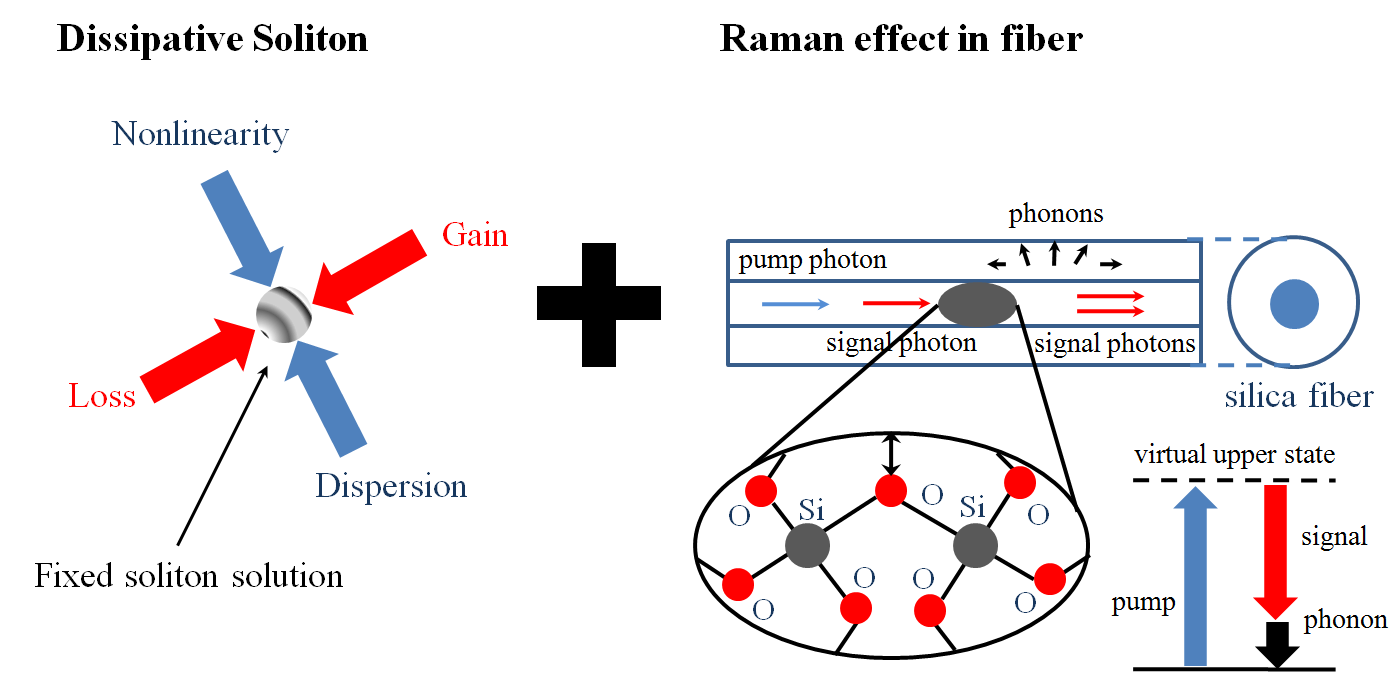
In past decades, ultrafast fiber lasers have attracted considerable attention due to their applications in fundamental research, biomedicine and industry.
Compared with rare-earth-doped ultrafast fiber lasers which can only operate in limited spectral range, ultrafast Raman fiber lasers have a unique advantage of wavelength agility. Nevertheless, their characteristics such as pulse energy, pulse width, and stability of the pulse train are worse than their rare-earth-doped counterparts.
Among different kinds of pulse shaping mechanisms, dissipative soliton (DS) is a valid technique to improve pulse energy and stability.
With respect to saturable absorbers, nonlinear optical loop mirror (NOLM) is a method compatible with all polarization maintaining (PM) fiber configuration and could achieve long-term stable pulse operation.
Recently, scientists from the Shanghai Institute of Optics and Fine Mechanics of the Chinese Academy of Sciences have developed a Raman DS fiber laser mode-locked by a NOLM, and the related work was published on Optics Express.
In the DS mode locking, spectral filtering is necessary for spectral and pulse shaping. Therefore, in their experiment, an all-fiber Lyot filter that bases on the birefringence and dispersion of PM fiber was applied to serve as a spectral filter.
Moreover, a 1064 nm amplified spontaneous emission source was used as a pump source in mode locked Raman fiber laser for the further improvement of pulse stability.
Their experiment demonstrated that stable 1120 nm Raman DS pulses with typical DS features could be obtained at a repetition rate of 1.23 MHz. The highest pulse energy and lowest pulse width is 1.23 nJ and 63 ps, respectively. Signal to noise ratio of the radio frequency spectrum of the Raman DS is as high as 85 dB.
The experimental result showed that NOLM-based Raman DS should be a promising solution for wavelength-flexible linearly-polarized pulses generation with high pulse stability. Therefore, this work can provide a novel method to obtain linearly-polarized ultrafast laser at flexible wavelengths.
This work was supported by the National Natural Science Foundation of China and China Postdoctoral Science Foundation.

Fig. 1. Experimental setup of the laser system (Image by SIOM)

Figure on the cover (Image by SIOM)

86-10-68597521 (day)
86-10-68597289 (night)

52 Sanlihe Rd., Xicheng District,
Beijing, China (100864)

